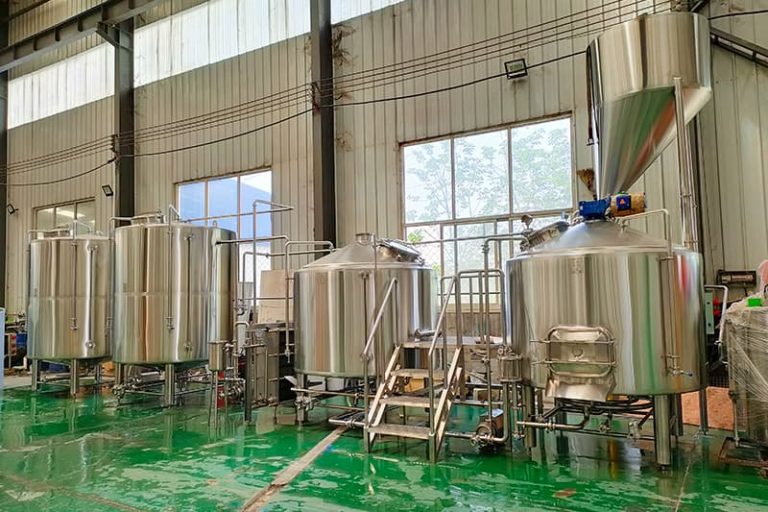The acid in beer is one of the flavors of beer, it can give the beer a soft and refreshing taste. At the same time, it is also an important buffer material, which is a condition to ensure the smooth progress of saccharification and fermentation. Through the introduction and discussion of the types, sources, influencing factors, and control measures of acid in beer, Micet Craft explained that controlling the acid in beer is extremely important.
Beer is a type of alcoholic beverage with a unique flavor produced from wort fermented by brewer’s yeast. The unique flavor of the beer is mainly produced and determined by the overall metabolites of yeast in the wort. The main flavor substances of beer include alcohols, esters, carbonyl compounds, organic acids, sulfides, amines, and phenols, among which acid is one of the main flavors of beer. Although acids do not constitute the flavor of beer, they can also affect the flavor of the beer. The right amount of acid can give the beer a soft and refreshing taste. Less acid will cause the beer to taste sluggish, sticky, and unpleasant. Also, excessive acid will make the beer taste rough, not soft, and uncoordinated. The right amount of acid is the condition to ensure the smooth progress of saccharification and fermentation. Because acid is an important buffer substance in beer, the acid and salt content in beer affects the change of pH value and the action of various enzymes. This article discusses the types, sources, influencing factors, and control measures of acid in beer. If there are any incomplete introductions, please feel free to extract opinions.
Acid in beer
Contents
hide
The main acids in beer
Beer is rich in various acids, about 100 kinds. Mainly divided into two categories: organic acids and inorganic acids. Among them, organic acids are divided into volatile acids and non-volatile acids. Volatile acids include short-chain fatty acids such as formic acid, acetic acid, propionic acid, butyric acid, isobutyric acid, and isovaleric acid. Non-volatile acids include pyruvic acid, α-ketoglutaric acid, malic acid, succinic acid, lactic acid, tartaric acid, citric acid, amino acids, nucleic acids, phenolic acids, and long-chain unsaturated fatty acids. Among them, inorganic acids mainly refer to hydrochloric acid, phosphoric acid, lactic acid, carbonic acid, and so on.

Sources of acids in beer
Malt
The acid in malt can be divided into the acid in malt and the acid produced by the biochemical reaction in the saccharification process. The acid in the malt is mainly phosphoric acid, followed by formic acid, acetic acid, propionic acid, citric acid, higher fatty acids, and various amino acids. At the beginning of saccharification, the organic phosphate contained in the malt is hydrolyzed by malt phosphatase to form a buffer composed of phosphoric acid and acid phosphate. Of course, there is also a buffer formed after protein is hydrolyzed into amino acids.
Brewing water
The calcium and magnesium ions in the water can convert the alkaline K2HP04 into acidic KH2P04 in the mash, which increases the acidity of the wort and decreases the pH value.
Added acid
During the preparation of wort, some acid may be added due to insufficient acid in malt or too high alkalinity in brewing water. This is to adjust the pH of the wort and to condense the enzymes and proteins in the malt. Adding more acid can also maximize the activity of enzymes, reduce the color of wort and beer, and increase the rate of wort leaching. The external acid generally uses phosphoric acid, lactic acid, hydrochloric acid, and sulfuric acid, etc. The specific acid to be used needs to be selected by the brewing process.
The acid produced during fermentation
During the fermentation process, yeast uses fermentable sugars for metabolism. The metabolism of yeast not only produces ethanol, water, CO2 but also produces volatile acids such as acetic acid and butyric acid and non-volatile acids such as lactic acid and succinic acid. The main volatile acid is acetic acid, which is the volatile acid that has the greatest impact on beer sourness. Succinic acid is the most non-volatile acid produced in beer fermentation and has a great influence on beer sourness. Part of the CO2 produced during the fermentation process will dissolve in the beer and combine with water to form weak carbonic acid.
Contaminating bacteria
Due to improper operation or poor hygienic management during the brewing process, germs have been contaminated. For example, Acetobacter, Lactobacillus, produces metabolites acetic acid and lactic acid. This situation is very harmful, and every brewery must do a good job in environmental sanitation.

Factors affecting acid in beer
Many factors affect acid in beer, and Micet Craft will explain these contents below.
The effect of raw materials on acid
If the malt is over-dissolved, it will result in a higher phosphate content in the wort. If there is insufficient ventilation or a high germination temperature during the preparation of malt, more acid will be produced. These acids mainly include organic acids such as formic acid, acetic acid, propionic acid, and lactic acid. Also, the use of malt with a high content of bacteria can cause higher acidity in the wort. Using inferior hops or auxiliary raw materials from factories with a storage time comparison will cause the fat to be hydrolyzed to generate fatty acids and increase the sourness of the beer. This will not only affect the foam of beer but also affect the flavor of the beer.
The effect of added acid on acid
Omit wort preparation, it is usually necessary to add a large amount of acid to adjust the pH value in the mash and wort. Lowering the pH value in the wort to 5.2-5.4 is conducive to the decomposition of protein and organic acid salts, and more amino acids and phosphates have been formed. This process will increase the acid in the beer.
The effect of brewing water on acid
It is best to use neutral and acidic water for brewing water, which is conducive to the effects of various enzymes in the malt. The difference in brewing water will have a certain effect on the acid in beer.
The effect of mashing conditions on acid
Malt is fed at low temperature (35-37°C) or soaked for too long, which is beneficial to the action of phosphatase and phosphatase to form more acid. Also, cutting materials at high temperatures are not conducive to the decomposition of proteins and organic phosphates and will limit the formation of acids. So, when the malt dissolves well, the mashing time should be shortened and the feeding temperature should be increased.
The effect of fermentation conditions on acid
Usually, the wort will ferment quickly when the fermentation temperature is high, the inoculum is large, the ventilation is good and there is agitation. But this will lead to a decrease in pH and an increase in acid content, but a decrease in volatile fatty acids. The oxygen in the brewing process and the dissolved oxygen in the beer will oxidize the reducing substances in the beer, resulting in a reduction of the reducing substances. The oxidation of long-chain unsaturated fatty acids will cause the beer to produce an aging taste.
The effect of yeast on acid
The performance of yeast directly affects the content of organic acids in beer, so strains with moderate and low acid production must be selected.
The effect of yeast autolysis
Because yeast cells contain various amino acids, nitrogenous substances, and fatty acids. So after the yeast autolyzes, these substances are released, which increases the acidity of the beer, and at the same time, it also brings a yeasty taste to the beer.
The effect of bacteria contamination on acid
When the yeast contains wild yeast or harmful bacteria in beer, it will form a variety of acidic substances and make beer sour.

Measures to control acid in beer
Control raw materials and auxiliary materials
The raw materials should be high-quality, mildew-free barley, and the germination temperature of the barley should be controlled. Since malt will carry various bacteria to varying degrees during transportation and storage, it must be properly sterilized during storage. In addition, auxiliary materials should be fresh and avoid oxidation. Severely oxidized raw materials will contain more fatty acids, thereby increasing the sourness of the beer.
Control of mashing process
During the mashing process, priority is given to adjusting the quality of the brewing water to minimize the amount of added acid. If the pH of the brewing water is high, the pH can be adjusted by adding lactic acid malt or using biological acidification technology. Also, the mashing time should be shortened as much as possible, and the wort should be clear and transparent after filtration.
Selection and management of yeast species
Use less acid-producing yeast for the fermentation process. Strengthen the management of yeast in the production process, and avoid the use of yeast that pollutes wild yeast and miscellaneous bacteria. Also, it is necessary to avoid excessive temperature fluctuations in the fermentation tank and to discharge yeast in time to prevent yeast autolysis.
Control the fermentation process
Control the fermentation process (fermentation temperature, the added amount of yeast, ventilation, etc.) to minimize acid rise.
Do a good job in the control and management of equipment hygiene
- Determine the microbiological testing points, and regularly sample and check them.
- All pipelines, tanks, etc. are cleaned by regulations. After each CIP cleaning, the laboratory must be notified to take samples and perform tests. They can be used only after they are qualified.
- The filter is removed and washed once a week; the cold wort pipeline and the plate heat exchanger need to be cleaned with a hot alkali cycle every time the fermentation tank is filled.
- The filter is regularly replaced with cardboard and CIP cleaning.
- Each nozzle should be sterilized regularly.
The above is the entire content of the article on acid in beer. Of course, you can also get more articles about the brewing process through our blog. Micet Craft hopes these articles can help you brew your beer better.

Get a turnkey solution for craft breweries
If you are ready to open a craft brewery, you can contact us. Micet Craft’s engineers will provide you with a list of craft brewery equipment and related prices. Of course, we can also provide you with professional turnkey brewery solutions, allowing you more time to focus on brewing delicious beer. Micet Craft very much hope to cooperate with you, my friend!

